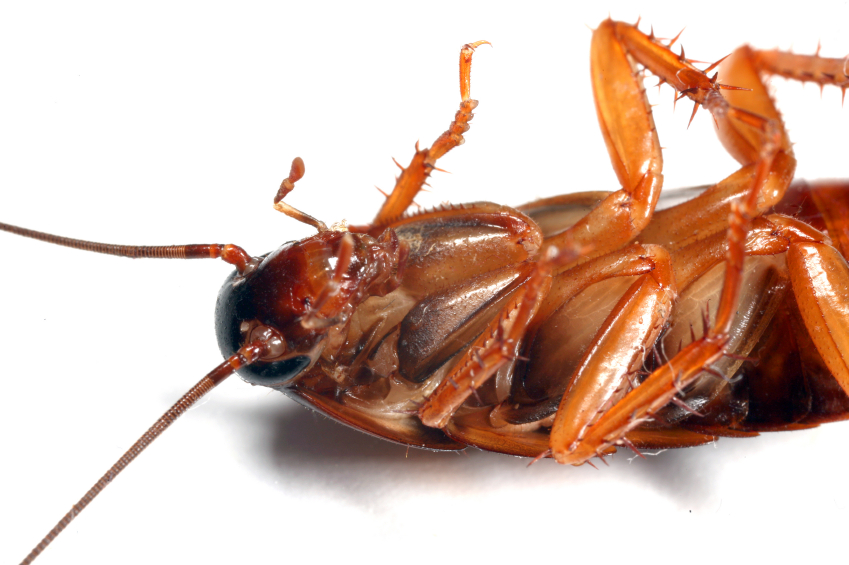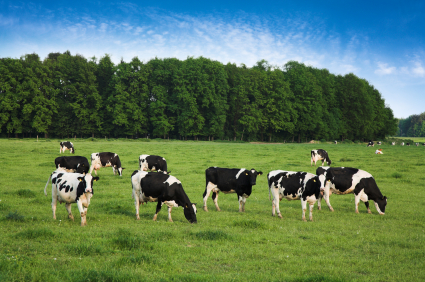There is a battle going on in the White House for the very soul of the organic dairy movement — and possibly over the future of small family-operated dairy farms — and you don’t even know it. I’d like to think that I’m overstating things but no. At issue is an obscure rule in the USDA Organic label that requires “access to pasture” for organic dairy cows. Barry Estabrook, ex of Gourmet, lays it out for us:
In the early 2000s, virtually all of the nation’s organic dairy farmers — not to mention the millions of consumers willing to pay a premium for organic products — agreed that milk certified as organic by the United States Department of Agriculture had to come from cows that had access to pasture.
As government regulations go, it sounds pretty straightforward: room to roam, clean air to breathe, fresh grass to eat. And that was the general consensus on what the National Organic Standards required.
But beginning in the mid-2000s, at about the time when it became evident that the green “USDA Organic” label translated into bigger profits, huge Confined Animal Feeding Operations (CAFOs) with herds of up to 10,000 cows located in western states got into the organic milk business.
And that’s where things started to get ugly. The giant dairies wanted a piece of the organic action and began to work the rules to qualify. Here’s what “access to pasture” meant to companies like Horizon Organics or Aurora Dairy, the milk giant that supplies many big box discounters with organic milk:
In some cases, a narrow, grassless strip outside the vast barns in which the animals were kept was considered “pasture” because some hay had been spread there. National Organic Standard Board (NOSB) allowances for cows and their very young calves to be kept indoors for a short period after birth were twisted to include all milking cows being kept inside 24/7 for 310 days a year.
Either through bureaucratic lassitude or willful neglect, the big producers were helped every step of the way by USDA officials.
Estabrook helpfully links to some photos of what an organic CAFO looks like — not much pasture anywhere to be seen.
Finally, in response to complaints from groups like the Cornucopia Institute, the USDA acted by forcing Aurora to adjust its practices. And now the USDA has updated the “access to pasture” rule in a way that, according to USDA officials, will:
… be in line with an understanding organic producers arrived at by consensus in the early 2000s: Milk cows will graze on pasture for the entire growing season, or for at least 120 days in areas of inclement weather, getting 30 percent of their food from pasture.
But before that rule goes into effect, it must be approved by the White House’s Office of Management and Budget (OMB). It’s a prime opportunity for those with access to do a little lobbying:
And guess who has been lobbying hard to “sway the Obama administration,” according to the Organic Consumers Association? None other than Aurora Dairy (whose chairman Mark Retzloff and his wife, Theresa, contributed $4,600 to the 2008 presidential campaign of Thomas Vilsack, the current head of the USDA, according to Campaignmoney.com) “That level of donor historically buys access,” said Kastel.
OMB has no expertise in this area, of course, and who knows what seemingly minor alterations at the prompting of large dairy lobbyists could do to undermine the rule’s intent. The Organic Consumers Association is meanwhile running a phone and email campaign to urge President Obama to approve the new rules as written.
The real debate, of course, isn’t over what is or isn’t pasture. It’s over whether organic agriculture is just a better version of industrial agriculture — in the case of dairy, one with slightly more humane CAFOs but still based on a grain-fed commodity system that favors low prices and high output over farmer income or product quality.
Or rather should organic agriculture be a government-supported “safe haven” market for small and medium-sized farms that receive a premium for avoiding the temptations of industrial efficiencies of scale and instead approach some sense of sustainability? It’s a debate we’ve willfully avoided — and now we’re faced with the result. If the OMB changes the rules and the “organic dairy CAFO” gets the USDA seal of approval, we’ll know that, whatever the positive rhetoric coming from the White House and the USDA, they will have allowed large-scale producers to come a step closer to ownership of the USDA Organic label. Organic may soon become just become another big business marketing tool and more and more dairy farmers will go out of business as large-scale producers take over. There is, sad to say, nothing sustainable about that.



